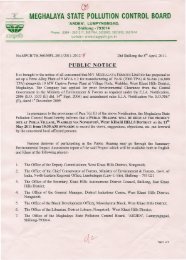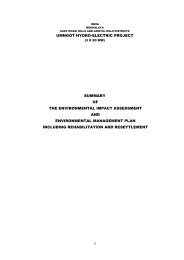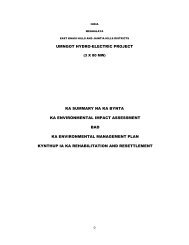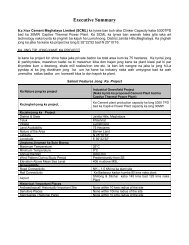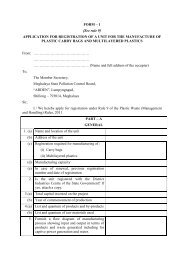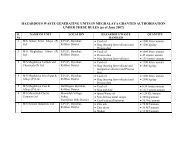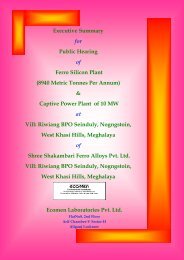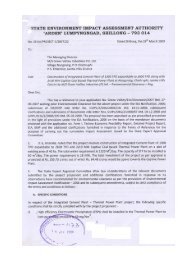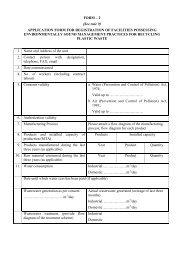chapter - 1 introduction - Meghalaya State Pollution Control Board
chapter - 1 introduction - Meghalaya State Pollution Control Board
chapter - 1 introduction - Meghalaya State Pollution Control Board
You also want an ePaper? Increase the reach of your titles
YUMPU automatically turns print PDFs into web optimized ePapers that Google loves.
Hills Cement Co. Limited.<br />
simultaneously and their resultant incremental concentration of the pollutant<br />
can be predicted.<br />
Extrapolation of Wind Speed<br />
Power law as given below calculates wind speed at stack level.<br />
U stack = U10 (Stack height/10) p<br />
Where U10 is the wind speed at 10-meter level and p is the power law<br />
coefficient (0.07, 0.07, 0.10, 0.15, 0.35 and 0.55 for stability classes A, B, C,<br />
D, E and F respectively) as per Irwin for rural areas (USEPA, 1987).<br />
Stability Classification<br />
Hourly stability is determined by wind direction fluctuation method as<br />
suggested by Slade (1965) and recommended by CPCB (PROBES/70/1997-<br />
1998).<br />
1a = Wdr/6<br />
1a is standard deviation of wind direction fluctuation; W dr is the overall wind<br />
direction fluctuation or width of the wind direction in degrees. The table for<br />
stability classes is given as under.<br />
Stability<br />
Class<br />
1a (degree)<br />
A > 22.5<br />
B 22.4 – 17.5<br />
C 17.4 – 12.5<br />
D 12.4 – 7.5<br />
E 7.4 – 3.5<br />
F < 3.5<br />
<strong>Pollution</strong> <strong>Control</strong> Consultants (India) Pvt. Ltd. 86



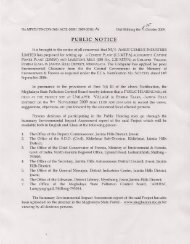
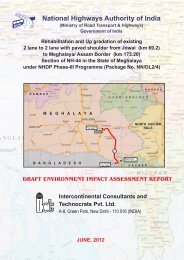

![[FORM I] - Meghalaya State Pollution Control Board](https://img.yumpu.com/49771786/1/190x245/form-i-meghalaya-state-pollution-control-board.jpg?quality=85)

